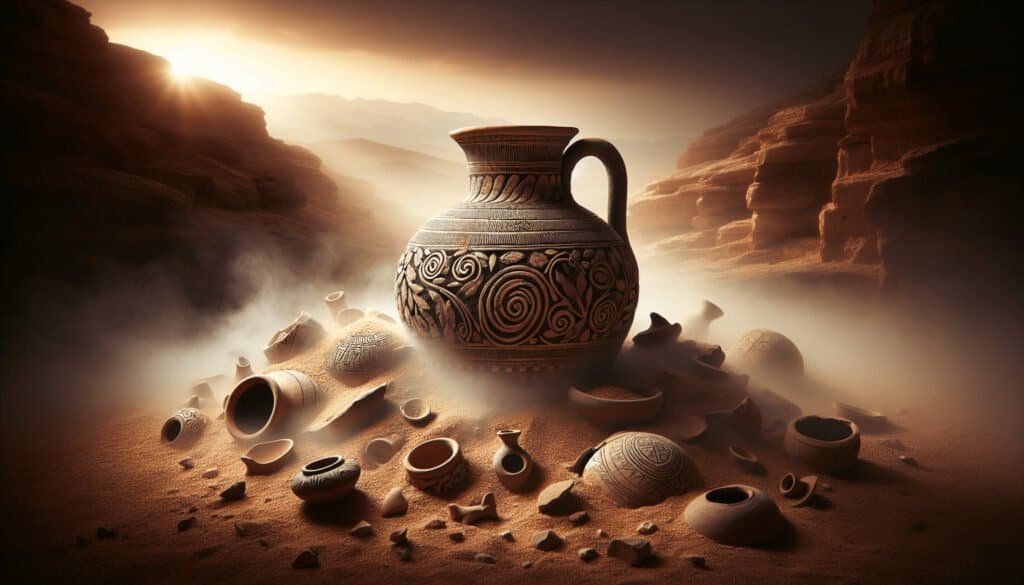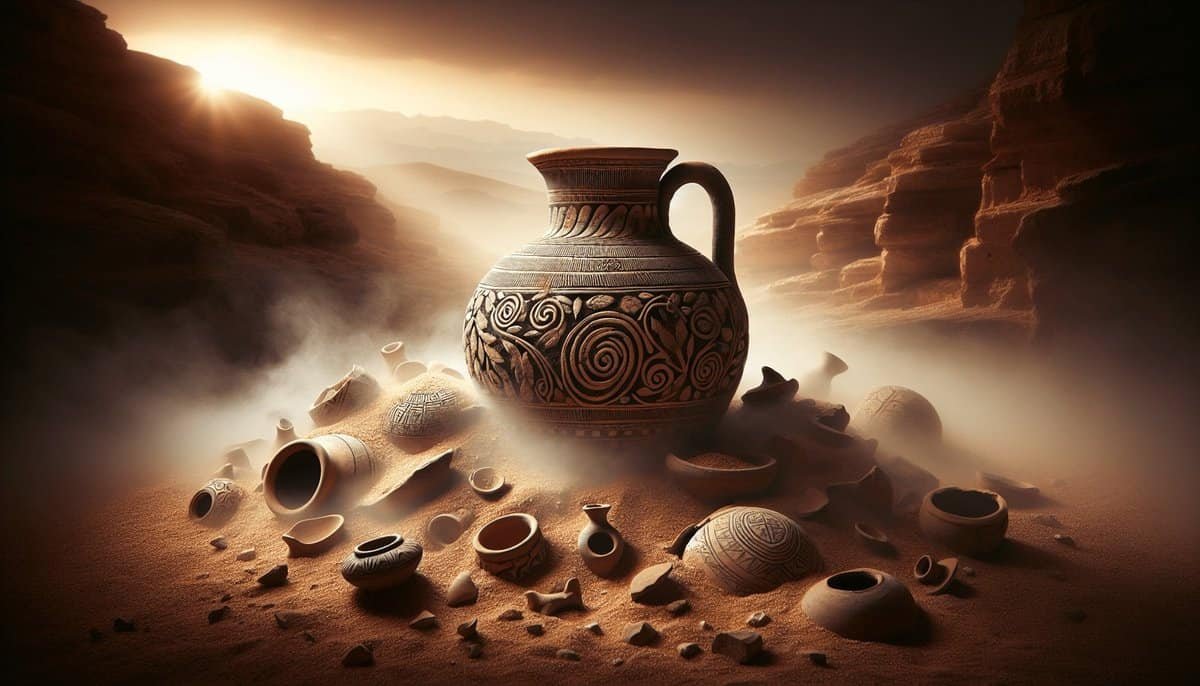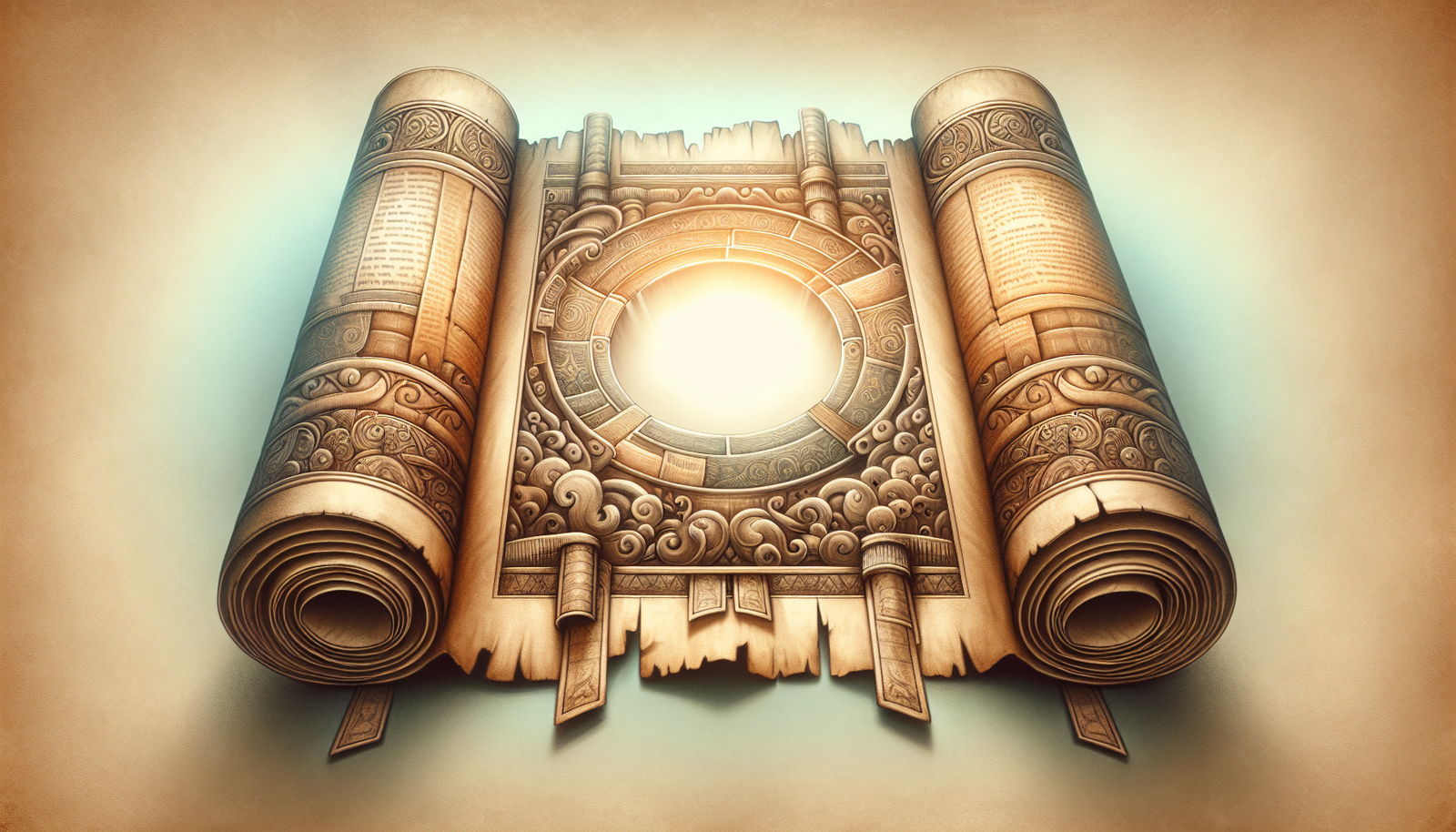Have you ever wondered what stories ancient artifacts might tell if they could speak? Imagine unearthing relics from thousands of years ago, feeling the weight of history in your hands. Such is the case with the Jordan clay pots, which hold secrets that beckon enthusiasts of archaeology, history, and biblical narratives alike.
The Allure of Jordanian Archaeology
Jordan is not simply a geographic location; it’s a treasure trove of ancient history. With its distinctive landscape and rich cultural heritage, it boasts an archaeological narrative that stretches back millennia. These clay pots serve as more than just remnants of civilizations; they’re fragments of a much larger story. When you consider the array of cultures that have thrived in this region, the contributions to our understanding of human development are staggering.
The Significance of Clay Pots
Why are clay pots so significant in the grand tapestry of archaeology? These vessels are more than mere containers. They represent the daily lives, rituals, and even the beliefs of the people who once used them. Often, they’re adorned with intricate designs or inscriptions that offer a glimpse into past societies. In Jordan, many of these pots date back to periods that coincide with key historical and biblical events.
Historical Context: A Potpourri of Cultures
When you think of Jordan’s history, it’s like a beautifully sewn quilt—each patch representing different cultures including the Nabataeans, Romans, and early Christians. Each of these civilizations utilized clay pots for various purposes, from cooking and storage to burial practices. These artifacts help shape our understanding of how these societies interacted with one another and evolved over time.
- Nabataeans: Renowned for their trade routes and rock-cut architecture, the Nabataeans left behind clay artifacts that highlight their prosperity in the region.
- Romans: With their advanced technology and expansive empire, Roman pottery reflects both form and function in a way that profoundly influences our understanding of daily life in the ancient world.
- Early Christians: Religious motifs found on clay pots used in burial practices reveal the spiritual beliefs of early Christians in the region, connecting ancient faith to contemporary religious practices.
The Day of Reckoning: What Do These Fragments Reveal?
The term “Day of Reckoning” often invokes themes of judgment and consequence in religious contexts. But how do these clay pots relate to such weighty concepts? The fragmented nature of these artifacts mirrors the fragmented stories of human history. Each piece offers insight into the beliefs and practices that defined different eras.
Scribes of the Past: Inscriptions and Symbolism
One of the fascinating aspects of clay pots found in Jordan is often what’s inscribed on them. Many pots feature markings or symbols that can be linked to specific events or religious beliefs. These inscriptions are not just decorative; they carry meanings that resonate with the theological narratives of the time.
The Role of Hebrew Scriptures
The Hebrew Scriptures emphasize the importance of writing and preservation of religious texts. For example, the Book of Jeremiah discusses the use of pottery in relation to prophecies about judgment and restoration. You might find it enlightening to consider how similar themes are echoed in the findings from Jordan.
- Prophetic Imagery: In Jeremiah, the act of purchasing a clay pot signifies hope amidst despair—an echo of future restoration that might resonate with the findings in Jordan.
- Cultural Continuity: These inscriptions depict a continuity of beliefs from ancient times to today, inviting you to ponder how much of these lessons remain relevant.
Archaeological Methodology: Unraveling the Past
How do archaeologists piece together the narratives tied to these clay pots? The process involves meticulous research, dating techniques, and sometimes even you might say, a bit of detective work.
Excavation Techniques
Before any story can be told, the first step lies in excavation. Not simply digging randomly, archaeologists employ specific methodologies to ensure the integrity of the artifacts:
- Stratification: This process involves understanding the layers of earth where artifacts are found, defining chronological order.
- Contextualization: Each artifact is studied within its specific context, which helps in understanding its significance and usage.
Preservation and Analysis
Once artifacts like clay pots are unearthed, they require careful preservation. You wouldn’t want these historical gems to fall apart, would you?
- Conservation Techniques: These include cleaning, repairing, and sometimes reconstructing shattered pieces.
- Scientific Analysis: Pottery analysis can reveal a wealth of information, from the types of clay used to the temperatures of kiln firing, which all contribute to a deeper understanding of ancient lives.

Cultural and Theological Insights
Moving beyond the physicality of the pots, what do they tell us about the cultures and theologies of those who made them?
Everyday Life and Rituals
Artifacts bring the past to life. Historical records indicate that clay pots were often involved in daily life and spiritual rituals. Have you ever thought about how cooking methods or storage techniques influence a culture’s dietary preferences or religious offerings?
- Food Preparation: The pots reveal the types of food consumed, which can be linked to trade and agriculture.
- Ritualistic Uses: Certain pots may have been used in ceremonies or as burial vessels, reflecting the spiritual practices of the time.
Connecting Ancient Beliefs to Modern Perspectives
The theological significance imbued in these clay pots resonates even today. You can see echoes of ancient wisdom in modern faith practices, rituals, and communal gatherings.
- Faith Embedded in Artifacts: Think about how spirituality is often expressed through physical objects and spaces in your own life, much like it was thousands of years ago.
- Lessons from the Past: The narratives encapsulated in these clay pots remind us of humanity’s quest for meaning and understanding beyond mere existence.
The Dead Sea Scrolls Connection
No conversation about Jordan’s archaeological treasures is complete without mentioning the Dead Sea Scrolls. Discovered in the mid-20th century, these scrolls have fundamentally changed our understanding of biblical text and history.
What Are the Dead Sea Scrolls?
They consist of ancient manuscripts that were hidden in caves near the Dead Sea. Much like the clay pots, these texts provide insight into the religious practices, thoughts, and tensions of their time.
The Relationship to Clay Pots
In many ways, the connection between the Dead Sea Scrolls and clay pots parallels the relationship between written and material culture:
- Complementary Narratives: While the scrolls provide the written accounts, the clay pots serve as tangible evidence of that culture’s context.
- Historical Validation: Several scriptural references found in the Scrolls align with the findings associated with clay pots, painting a fuller picture of historical theology in the region.

Modern-Day Implications
You might think, “What relevance do these ancient artifacts hold for us today?” While their stories are centuries old, their influences ripple through time into our modern landscape.
Archaeological Tourism in Jordan
The discovery of Jordan’s clay pots has spurred a wave of interest in archaeological tourism. Would you visit a site knowing it tells the tales of humankind’s past? Tourists flock to sites like Petra, fueled by a desire to connect with history.
- Economic Impact: The boost in tourism not only helps the local economy but also fosters cultural exchange and education.
- Cultural Preservation: Increased interest often leads to better preservation efforts of both artifacts and historical sites.
Educational Opportunities
For you, the reader, these discoveries can inspire a love for history and archaeology. Whether in a classroom or a museum, understanding the significance of these pots elevates awareness of cultural heritage.
- Cross-disciplinary Learning: By studying these artifacts, you engage with history, art, religion, and even science—making it a captivating multi-faceted topic.
- Encouraging Curiosity: The fragments of clay pots should ignite curiosity about the lives of those who came before, sparking further exploration into various disciplines.
Wrapping Up: A Tapestry of Time
So, what have we uncovered throughout this journey? The Jordan clay pots tell a fragmented yet profound story that connects us to the past. They remind you that each little shard holds within it the beliefs, customs, and aspirations of people long gone.
Final Reflections
In your pursuit of knowledge, consider how the themes of judgment, community, and cultural exchange continue to resonate through these artifacts. Just like the clay pots serve as vessels for stories, they also carry the weight of human experience—reminding us that we, too, are but fragments in the ongoing narrative of life.
As you reflect on these ancient relics, know they are not isolated from your world. They invite you to draw parallels, contemplate their significance, and carry forward the lessons learned. And let’s be honest—who wouldn’t want a deeper connection to the rich history that came before us?



